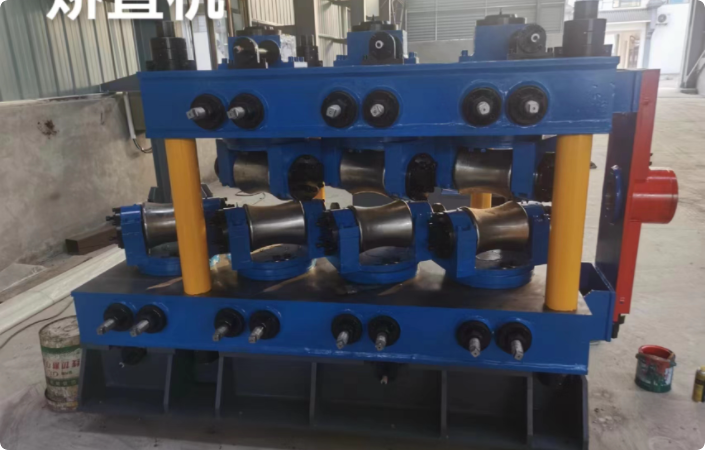metal brake and shear
Understanding Metal Brake and Shear An Essential Guide
In the world of metal fabrication, two fundamental processes stand out as critical for shaping and manipulating metal sheets metal brake and shear. Both techniques play pivotal roles in manufacturing and construction, allowing for precision cutting and bending of metal materials. This article explores the intricacies of these processes, their applications, and their significance in various industries.
What is Metal Shearing?
Metal shearing is essentially a cutting process used to produce straight cuts in metal sheets or plates. It operates on the principle of applying a significant force to separate the material along a straight line. The shear machine typically consists of a pair of blades that move in opposite directions, with one blade fixed and the other moving. This tool effectively slices through the metal, usually without leaving burrs or distortions on the edges.
Shearing is commonly used for a variety of materials, including steel, aluminum, and other non-ferrous metals. Industries ranging from automotive to aerospace benefit from this process, as it allows for the quick and effective production of parts with precise dimensions. Shearing is particularly useful in preliminary manufacturing stages, where large sheets of metal require cutting down into manageable sizes before undergoing further processing.
The Metal Brake Bending with Precision
On the other hand, a metal brake, often referred to as a brake press or bending machine, focuses on bending metal sheets into specific angles and shapes. This process is crucial for creating components that need to fit together seamlessly in assemblies. Metal brakes come in various forms, including manual, hydraulic, and CNC-operated versions, allowing operators to achieve precise bends that enhance the functionality of the finished product.
Metal brakes function by clamping the metal sheet between a top tool (punch) and a bottom tool (die), after which the top tool descends to create the desired bend. The precision of this process is vital, as even minor errors in angling can lead to poor-fitting components, resulting in increased costs and project delays.
metal brake and shear

Applications Across Industries
Both metal shearing and bending have applications across a wide array of industries. In construction, for instance, sheared metal sheets can be used for roofing, siding, and framing, while bent sections can create structural supports or decorative elements. The automotive industry relies heavily on both processes to produce vehicle parts, such as brackets, frames, and body panels, which must meet strict specifications for performance and safety.
In the manufacturing sector, these techniques are equally crucial. Aerospace companies need lightweight yet durable components that metal shearing and bending can provide. Additionally, electronic manufacturers depend on precision parts formed using metal brakes and shears for their housing and circuitry.
The Importance of Precision
One of the most significant aspects of both metal shearing and bending is the need for precision. Inaccuracies during either process can lead to material waste, increased production costs, and compromised product quality. As such, investing in high-quality machinery and skilled operators is vital for businesses aiming to excel in metal fabrication.
Moreover, advancements in technology have led to the development of sophisticated CNC shearing and bending machines, which utilize computer software to enhance precision and efficiency. These machines can create complex shapes and patterns, allowing for greater creativity and innovation in design.
Conclusion
Metal shearing and bending are cornerstones of the metal fabrication industry, enabling a wide range of applications across multiple sectors. The ability to shape metal with precision and efficiency not only enhances production quality but also reduces waste and costs. As technology continues to evolve, the capabilities of metal brakes and shears will expand, paving the way for even more innovative uses in the future. Understanding the importance of these processes is crucial for anyone involved in the design, manufacturing, or construction industries, ultimately reinforcing their significance in our everyday lives.
-
High Frequency Straight Seam Welded Pipe Production Line-BzZhou Xinghua Machinery Equipment Manufacturing Co., LTD.|line pipe steel&welded gas pipeNewsJul.30,2025
-
High Frequency Straight Seam Welded Pipe Production Line-BzZhou Xinghua Machinery Equipment Manufacturing Co., LTD.|High Precision&Automated SolutionsNewsJul.30,2025
-
High Frequency Straight Seam Welded Pipe Production Line - BzZhou Xinghua Machinery Equipment Manufacturing Co., Ltd.NewsJul.30,2025
-
High Frequency Straight Seam Welded Pipe Production Line-BzZhou Xinghua Machinery Equipment Manufacturing Co., LTD.|Precision Welding, High EfficiencyNewsJul.30,2025
-
High Frequency Straight Seam Welded Pipe Production Line|BzZhou Xinghua|Precision Welding&EfficiencyNewsJul.30,2025
-
High Frequency Straight Seam Welded Pipe Production Line - BzZhou Xinghua|Precision Engineering&EfficiencyNewsJul.30,2025


